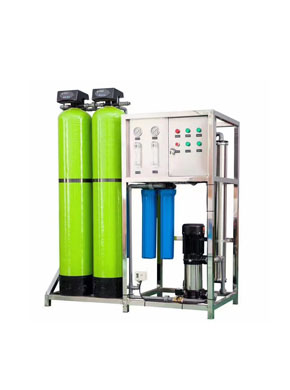The Development Trends of Water Purification Treatment Technologies
Technological Innovation and High Efficiency
Continuous Upgrading of Membrane Separation Technology: Reverse osmosis membranes have greater flux, higher desalination rates, and longer service lives. For example, the flux of the new reverse osmosis membranes of Dow Chemical is more than 30% higher than that of traditional membranes. The selectivity and stability of nanofiltration membranes have been enhanced, enabling them to better retain beneficial minerals while removing harmful substances. The materials and structures of ultrafiltration membranes are constantly being improved, resulting in higher filtration precision, greater flux, and stronger anti-fouling capabilities.
Research and Development of New Purification Technologies: Technologies such as nanotechnology, ultraviolet sterilization technology, and electrochemical purification technology are constantly evolving, which can more effectively remove pollutants in water and reduce the frequency of consumable replacement and costs. For instance, advanced oxidation technology can degrade refractory organic pollutants in water. Some new photocatalytic materials can efficiently decompose harmful substances in water under light conditions.
Intelligentization and Internet of Things
Remote Monitoring and Intelligent Control: Through IoT technology, users can monitor the water quality status in real-time on their mobile phones, including multiple indicators such as pH value, hardness, and residual chlorine content. They can also remotely control the on/off switch and mode switching of water purifiers. Some water purifier products of brands like Xiaomi and Midea already have this function.
Fault Prediction and Maintenance Reminder: By using big data analysis technology, the operation data of water purification equipment is analyzed to predict equipment failures and maintenance requirements. It timely reminds users to replace filters and other components, improving the service life and reliability of the equipment.
Environmental Protection and Sustainability
Environmentally Friendly Material Selection: An increasing number of enterprises are using environmentally friendly materials, such as biodegradable plastics and lead-free brass, to reduce environmental pollution.
Energy Conservation and Resource Recycling: The application of energy-saving technologies has received much attention. Some water purifiers use low-energy pumps and intelligent control systems to reduce energy consumption. At the same time, the wastewater generated by water purifiers is more rationally utilized, for example, for flushing toilets and watering flowers.
Personalization and Customization
Product Function Customization: Enterprises provide personalized designs and customized production according to the needs of different users. For example, they configure more efficient filtration systems for areas with poor water quality and design water purifiers that can retain an appropriate amount of minerals for families with infants and young children. Moreover, water purifiers with different fluxes and functions can be customized according to factors such as the number of family members and water usage habits.
Health Monitoring Function Customization: Some high-end water purifiers can detect the mineral content in water to evaluate the drinking water health status of users and even provide personalized healthy drinking water suggestions.
Multifunctional Integration
Function Integration and Expansion: Modern water purifiers are no longer limited to the simple function of water purification but are integrated with other functions, such as heating, ice-making, and water dispenser functions. They can also add a mineralization function, adding beneficial minerals to the water while purifying it, making the drinking water healthier and more nutritious.
Integrated Design: Integrating commercial water purification equipment with water treatment systems can improve the overall efficiency and stability of the equipment. Incorporating advanced water purification technologies into community-level or city-level water treatment systems ensures the safety of public water use.
Cross-border Integration and Internationalization
Cross-industry Integration: Integrating with the smart home industry, water purifiers become part of the smart home ecosystem and can be interconnected with other smart devices in the home. Combining with the health management industry, water quality data is integrated with users' health data to provide more comprehensive health management solutions. Cooperating with the Internet industry expands sales and after-sales service channels.
International Market Expansion: Some powerful domestic enterprises are turning their attention to the international market. Through technological innovation and product upgrading, they improve the international competitiveness of their products and expand their overseas market share.
Standardization and Regulation
Strengthened Quality Supervision: National standards put forward higher requirements for the quality of domestic and similar-purpose drinking water treatment devices, including establishing a quality traceability system and introducing indicators such as cumulative net water volume and cumulative net water production rate, which prompts enterprises to pay more attention to improving product quality.
Alignment with International Standards: The standards for domestic water purification equipment are gradually aligning with international standards, improving the international competitiveness of China's water purification equipment. At the same time, it also encourages enterprises to produce and manage in accordance with international standards.





